It is mid-way through the new Ring cycle, and we are taking lunch outside the old town hall on the high street in Bayreuth. Discussion at neighbouring tables is intense: “The Ring is a child!”, “Why does Wotan have no spear?”, “The pyramid in the box – what is that all about?”
The new production, by Austrian director Valentin Schwarz, is streamlined and modern. It clears away much of Wagner’s symbolism and reassigns the narrative to new and disparate ideas. The reception has been decidedly mixed, but many of the new concepts deserve careful consideration.
The production, and the entire Bayreuth Festival this year, is a triumph over COVID adversity. At this stage in the pandemic, the worst place to be is in an orchestra pit, and the turnover of musicians has become depressingly routine. Many of the singers have also been recast at short notice, repeatedly in some cases. After months of careful preparation, this new Ring cycle was ready to perform by the late spring of 2020, but like everything else was unceremoniously abandoned until some unforeseeable date.
Schwarz said little before the premiere, just that he was moving away from gods and magic, and that he wanted to present the work in terms of ordinary people. He compared his conception to a Netflix series, but had to backtrack when it became known in the German press as the “Netflix Ring”. His main visual reference is television crime dramas, with Wotan the head of a rich family, riven by strife and conflict, usually resolved in armed showdowns. Guns replace swords then – well, mostly. The biggest problem with this staging is that the symbolism is incomplete – many elements of the story are simply ignored – and inconsistent, with the visual references in one opera contradicted later on. But many of the underlying ideas are good and original, even if the scale and depth of Wagner’s drama continually frustrated.![]() The first part, Das Rheingold, opens with a projected animation. What seems to be a gradually ascending DNA molecule is revealed to be twin umbilical cords, and when we reach the two foetuses, they are fighting viciously. That theme, of sibling rivalry, becomes an underlying motif, and Schwarz alters the narrative, radically in many places, to make the story a clan rivalry between the gods and dwarves, though all brought down to a human scale, playing out a personal conflict between Wotan and Alberich.
The first part, Das Rheingold, opens with a projected animation. What seems to be a gradually ascending DNA molecule is revealed to be twin umbilical cords, and when we reach the two foetuses, they are fighting viciously. That theme, of sibling rivalry, becomes an underlying motif, and Schwarz alters the narrative, radically in many places, to make the story a clan rivalry between the gods and dwarves, though all brought down to a human scale, playing out a personal conflict between Wotan and Alberich.
The Rhinemaidens are au pairs, with a group of children at a swimming pool, one of whom Alberich abducts. The child, it soon becomes clear, is the ring, and the ring’s malign influence is represented by his petulant behaviour. This leads to the first of the cycle’s most successful scenes – Nibelheim as an unruly kindergarten. A classroom is presented as a large, glass-panelled box, in which the boy terrorises girls of a similar age. Paint is thrown, and tables are upturned. The child also becomes the Tarnhelm, sitting on Alberich’s shoulders, blindfolded, and waving a gun at Wotan and Loge. It is a great concept, though, typically as it turns out, the Tarnhelm is completely absent in the later operas.
Meanwhile, the gods are living in luxury, as a large family in a smart house. The giants are hitmen, arriving in a large SUV, into which Freia in bundled. Fafner’s killing of Fasolt is another visually arresting scene. Fasolt falls across the bonnet of the car and ends up slumped lifeless in the corner of the garage, starkly illuminated by the headlights. From the second part, Die Walküre, onwards, Valentin Schwarz diverts more radically from the libretto, and his narrative seems to run in parallel with Wagner’s from here on. When we, and Siegmund, meet Sieglinde, she is already pregnant. Some ambiguous sexual activity in Act II reveals that Wotan is the father. This streamlines the dualism between Wotan and Alberich, as it means their respective sons will conclude the feud in the final part. It also intensifies the incest theme, though Schwarz represents this just as typical bad behaviour from the amoral Wotan.
From the second part, Die Walküre, onwards, Valentin Schwarz diverts more radically from the libretto, and his narrative seems to run in parallel with Wagner’s from here on. When we, and Siegmund, meet Sieglinde, she is already pregnant. Some ambiguous sexual activity in Act II reveals that Wotan is the father. This streamlines the dualism between Wotan and Alberich, as it means their respective sons will conclude the feud in the final part. It also intensifies the incest theme, though Schwarz represents this just as typical bad behaviour from the amoral Wotan.
Act II takes place at Freia’s funeral, following suicide, an interesting twist. Nothung turns out to be a handgun rather than a sword, and there is much gunplay in the second and third acts, with Siegmund even pulling a gun on Brunnhilde in the Annunciation of Death. Grane, Brunnhilde’s horse, is a man, sometime personal servant and later love rival to Siegfried – a nice idea, but of course there is nothing in the music to support the new dynamic that it creates. The Ride of the Valkyries takes place in the outpatient ward of plastic surgery clinic (pictured above), which is fun, but of little obvious relevance. The ending of Walküre is a massive anti-climax, with the Magic Fire represented as a solitary candle sitting atop a catering trolley. Heavy booing followed, and not for last time in this cycle.
Part three, Siegfried, opens on a more promising note. Mime (Arnold Bezuyen, pictured below) is raising the young Siegfried, for his own mercenary ends, and the abusive, dysfunctional relationship is represented though Mime throwing a bizarre, lacklustre birthday party for the boy. The forging of Nothung is tricky, given that the sword was previously represented as a gun, but Schwarz cuts his losses and gives us both; Siegfried holds the sword in his right hand while pistol-whipping Mime with the gun in his left.
The most impressive reimaging in this new Ring cycle is the second act of Siegfried, where Siegfried is led by the Woodbird to the lair of Fafner the dragon, whom he slays. Here, Fafner is an old, dying man, in a hospital bed. The Woodbird is one of his medical carers, and when he assaults her in Siegfried’s presence, the killing takes on greater moral force. But everything about this mise-en-scène fits beautifully with Wagner’s directions, a moment of compelling theatre that the rest of the production rarely rises to. One further revelation here: the abducted boy who represented the ring, is now an adult, and the (mute) role is credited as the young Hagen. So Schwarz has combined the ring, the bearer of the curse, with Hagen, who plays out its effects in the final part. Again, it is a huge indulgence, and much of the text from here on bears little relation to what we see on the stage, but it ties in nicely with the family saga idea that Schwarz is aiming at. 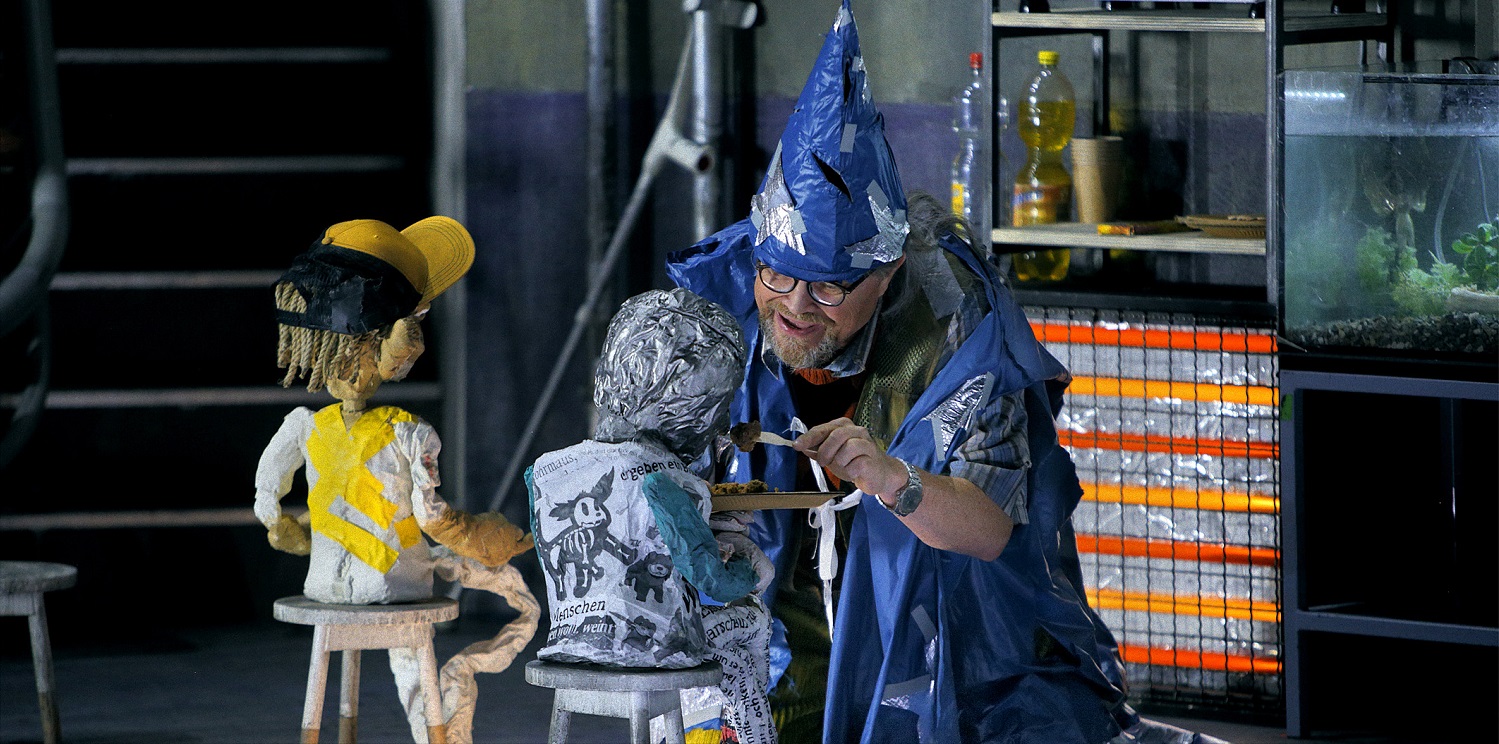 Combing the ring with Hagen poses particular problems in the final opera, Götterdämmerung, because both play important and distinct roles in the drama. Schwarz’s solution to the problem he has created for himself is to introduce another child, a daughter to Brünnhilde and Siegfried, over whom the protagonists can fight. The main benefit, from a dramatic perspective, is that the callous behaviour of Hagan and the Gibichung pair (the humans who play a decisive role in his downfall) is observed by the child on the stage, suggesting a more innocent moral perspective against which they can be judged. Their decadence is represented through Gunther as a coked-up party animal, which is fun. The Norns are phantoms in the child’s dream, another nice touch. The denouement returns us to the swimming pool at the start, now empty and fenced off. Plenty of associations for the flood that (should) engulf the stage at the end, then, though little suggestion of fire. Brünnhilde douses herself in petrol, but it is a crude and dramatically unfulfilling alternative. Fortunately, the ending works from a dramatic perspective, with a projection on the wall of the pool of the same twins in utero that opened the cycle, now embracing peacefully.
Combing the ring with Hagen poses particular problems in the final opera, Götterdämmerung, because both play important and distinct roles in the drama. Schwarz’s solution to the problem he has created for himself is to introduce another child, a daughter to Brünnhilde and Siegfried, over whom the protagonists can fight. The main benefit, from a dramatic perspective, is that the callous behaviour of Hagan and the Gibichung pair (the humans who play a decisive role in his downfall) is observed by the child on the stage, suggesting a more innocent moral perspective against which they can be judged. Their decadence is represented through Gunther as a coked-up party animal, which is fun. The Norns are phantoms in the child’s dream, another nice touch. The denouement returns us to the swimming pool at the start, now empty and fenced off. Plenty of associations for the flood that (should) engulf the stage at the end, then, though little suggestion of fire. Brünnhilde douses herself in petrol, but it is a crude and dramatically unfulfilling alternative. Fortunately, the ending works from a dramatic perspective, with a projection on the wall of the pool of the same twins in utero that opened the cycle, now embracing peacefully.
The booers would disagree, but I found much of interest in this production. The Nibelheim scene, the killing of Fafner and the ending of Götterdämmerung all work well in dramatic terms, and in each case, the additions and changes that Schwarz has made bring new and valuable perspectives. But elsewhere, the sheer inconsistency of the symbolism, and the fact that so many elements of the story are simply ignored, leave you feeling short-changed.
Musically, the standards were high, despite the many last-minute changes and alterations. The most important of these was the conductor, Cornelius Meister, who only came on board a few weeks before opening night, to replace a Covid-stricken Pietari Inkinen. Meister’s reading is fast and slick, an approach that aligns well with Schwarz’s prosaic, realist aesthetic. His conducting gradually grew in confidence and sophistication as the cycle went on, and Meister drew impressive playing from the woodwind soloists, and underlined the dramatic climaxes with dark and cleanly defined low brass and timpani.
The casting of each opera was impressive. For some reason, Wotans and Brünnhildes changed from opera to opera. That may have been a Covid contingency rather than an artistic decision. It did make sense at one juncture: like her fellow Valkyries, Brünnhilde undergoes plastic surgery when she is in the Magic Fire. So having Iréne Theorin disappear at the end of Walküre and Daniela Köhler appear in Siegfried made good sense. Theorin was back in Götterdämmerung, but Köhler gave the better performance. Both Siegfrieds were impressive, especially the first, Andreas Schager (pictured above, with Daniela Köhler), whose voice seems to be maturing into the heavyweight Wagner roles, though he still lacks the gradation needed to integrate the loudest passages.
For Götterdämmerung, both Stephen Gould and his understudy (reportedly Schager) were taken ill, and Clay Hilley stood in at one day’s notice with no previous knowledge of the high-concept production. His is a more even voice, although a little lacking in weight. The casting of Wotan was a story in itself. In the second act of Walküre, Tomas Konieczny sat down dramatically in a fashionable office chair, which collapsed beneath him. The audience took this for yet another directorial indulgence and laughed along. But he was injured, and had to be replaced in the third act by Michael Kupfer-Radecky (who was also Gunther). Both were strong Wotans (Konieczny had recovered for Siegfried), but better still was Egils Silins in Rhinegold, a slick but weighty baritone, dramatically compelling too.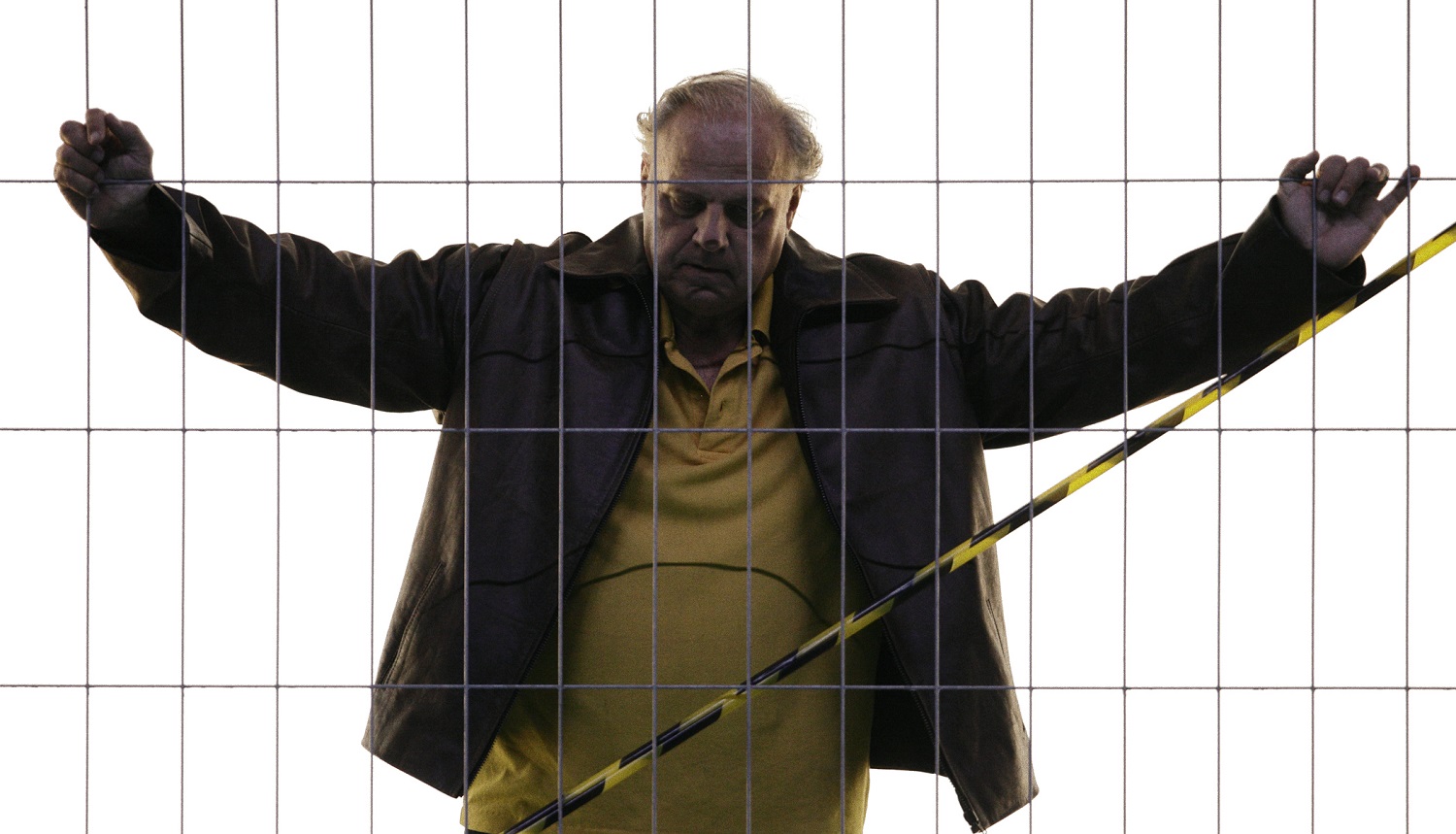 The overall standout voice of the entire cycle was Lise Davidsen as Sieglinde. She has clarity and brilliance, and easy, unforced projection at all dynamics. She is one of the great Wagner singers of our times, and I look forward to her Brünnhilde.
The overall standout voice of the entire cycle was Lise Davidsen as Sieglinde. She has clarity and brilliance, and easy, unforced projection at all dynamics. She is one of the great Wagner singers of our times, and I look forward to her Brünnhilde.
Meanwhile, all discussion remains fixed on Valentin Schwarz and his radical, unpredictable and provocative ideas. No doubt this review will appear alongside many that roundly condemn the production. On the whole, I’m inclined to agree that this production is not worthy of Wagner and not worthy of the house. But I’d point his critics to the few scenes in which a real sense of directorial authority shines through, and especially Act II of Siegfried. Original, insightful and dramatically compelling – an all too brief demonstration of this director’s unique vision.

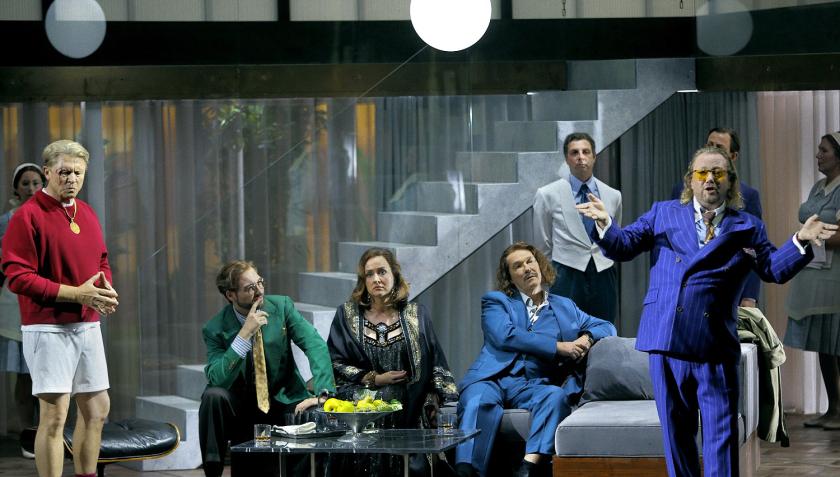







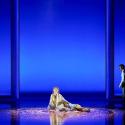


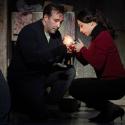
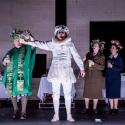
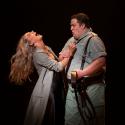
Add comment